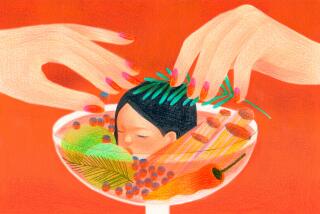Coca-Cola Seeks More Fizz With Non-Soda Lines
- Share via
One of E. Neville Isdell’s goals when the former Coca-Cola Co. manager returned as chief executive in 2004 was to perk up U.S. sales by selling more water and sports drinks, as PepsiCo was doing to propel growth.
This year he introduced more than two dozen noncarbonated drinks, including flavored Dasani water and a grape version of Powerade, a rival to PepsiCo’s Gatorade.
Coca-Cola’s sales volume of non-soda beverages rose 7% in the second quarter. PepsiCo’s jumped 23%.
Two years after Isdell, 63, came out of retirement to take on PepsiCo, Coca-Cola remains a distant second in drinks without fizz, with a 25% share of the U.S. market. PepsiCo has a 49% share, driven by its $14-billion purchase of Gatorade’s owner, Quaker Oats Co., in 2001 after Coca-Cola passed on the deal as too expensive.
“In a lot of stores you walk down the aisles and it’s Gatorade, Gatorade, Gatorade and then there’s one little spot for Powerade,” said Marc Inboden, a money manager with Beese Fulmer & Pincoe Inc. in Canton, Ohio, which holds 70,000 shares of Coca-Cola among $400 million in assets.
Purchase, N.Y.- based PepsiCo’s move beyond sodas has helped its sales and stock price grow faster than Coca-Cola’s.
PepsiCo’s revenue increased an average of 5% over the last five years, and its stock has gained 37% compared with a 3% sales increase for Atlanta-based Coca-Cola and a stock price that has dropped 7.1%.
Shares of Coca-Cola, the world’s largest soft drink maker, gained 13 cents Friday to close at $44.31. PepsiCo, which is second worldwide in soda, rose 35 cents to $63.01.
Coca-Cola is up about 10% so far this year, outstripping PepsiCo’s gain, as investors remain attracted to its steady cash flow and regular dividend payments, said Christopher Meeker, an analyst with Farr Miller & Washington in Washington.
Sales of non-soda drinks in the U.S. totaled $18 billion last year, with unit volume rising 14%, according to Beverage Digest. Volume in the $68-billion soda market slipped 0.2%, the first industrywide drop in at least two decades.
Pepsi derives less than 20% of its annual $32.6 billion in sales from soda. Coca-Cola depends on soft drinks for 80% of its total unit volume.
The company doesn’t disclose what proportion of its annual revenue of $23.1 billion comes from soda. Isdell declined to comment for this story.
Much of PepsiCo’s success stems from Gatorade, which controls 79% of the $6.8-billion sports drink market, compared with Powerade’s 19%.
On Aug. 14, PepsiCo promoted Chief Financial Officer Indra Nooyi to chief executive. She will succeed Steve Reinemund in October. Nooyi was the lead negotiator on more than a dozen acquisitions PepsiCo made over the last five years, including the purchase of Quaker and Tropicana.
Coca-Cola almost bought Quaker for $15.3 billion in November 2000 and went as far as flying then-CEO Douglas Daft to New York to take publicity photos with Quaker Chairman Bob Morrison.
PepsiCo introduced its Aquafina water in 1995, four years before Coca-Cola created Dasani. Aquafina holds 15% of the U.S. bottled water market, while Dasani has 9%, Beverage Digest says.
“If Pepsi hadn’t diversified into these other drinks with the bottled water and the sports drinks and the tea, they’d be in the same boat as Coke,” said Marvin Roffman of Roffman Miller Associates in Philadelphia, which holds PepsiCo shares among $330 million in assets.
Coca-Cola is introducing Gold Peak green tea and Minute Maid orangeade, plus a line of Godiva milk-based drinks. The company has boosted sales of caffeinated drinks with names such as Full Throttle and Tab Energy, and it created glow-in-the-dark aluminum bottles of the company’s namesake beverage to sell at nightclubs.
“Consumers want different kinds of drinks at different times of the day for different reasons,” said Dan Dillon, senior vice president of portfolio strategies for Coca-Cola North America.
More to Read
Inside the business of entertainment
The Wide Shot brings you news, analysis and insights on everything from streaming wars to production — and what it all means for the future.
You may occasionally receive promotional content from the Los Angeles Times.









